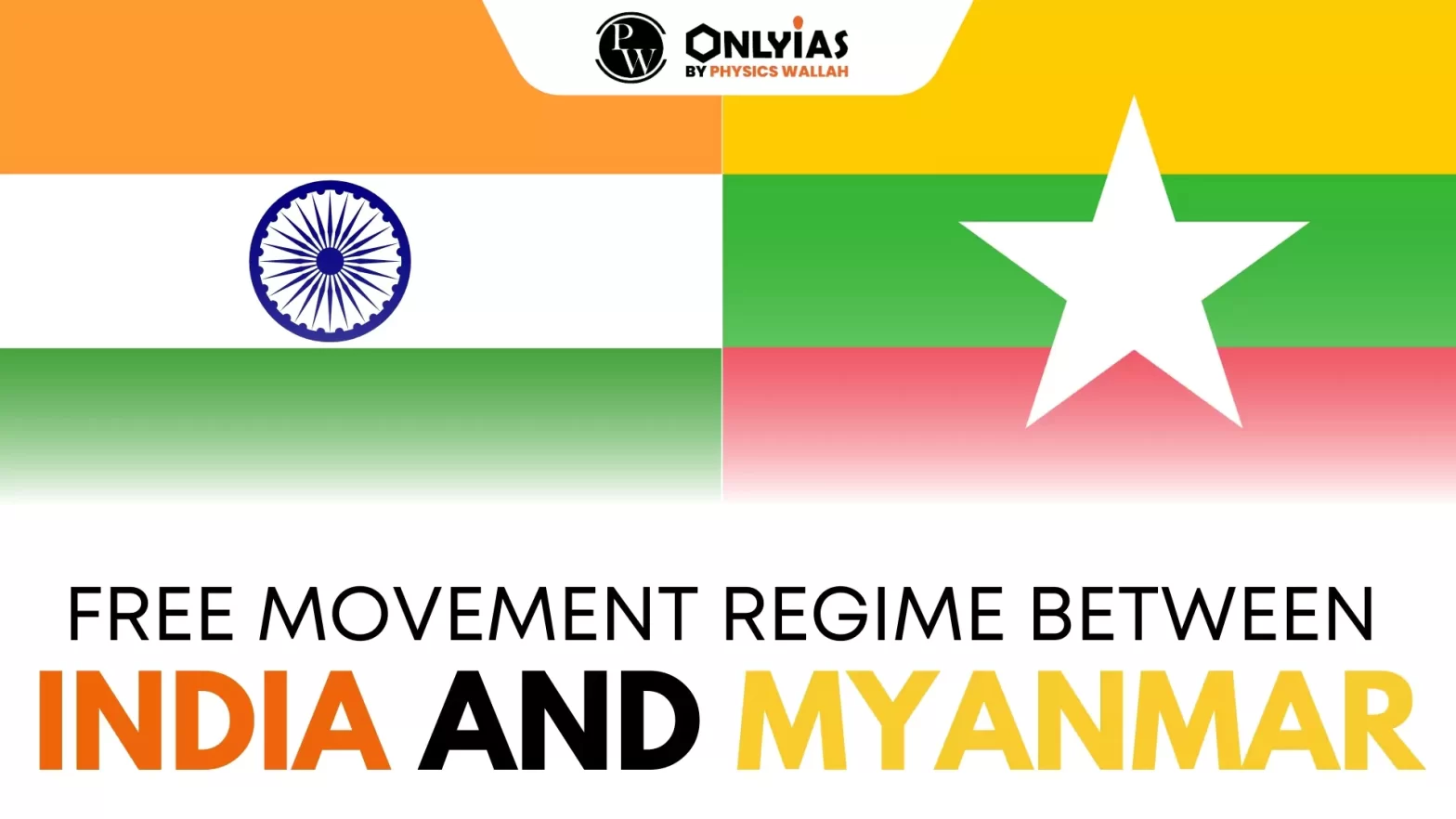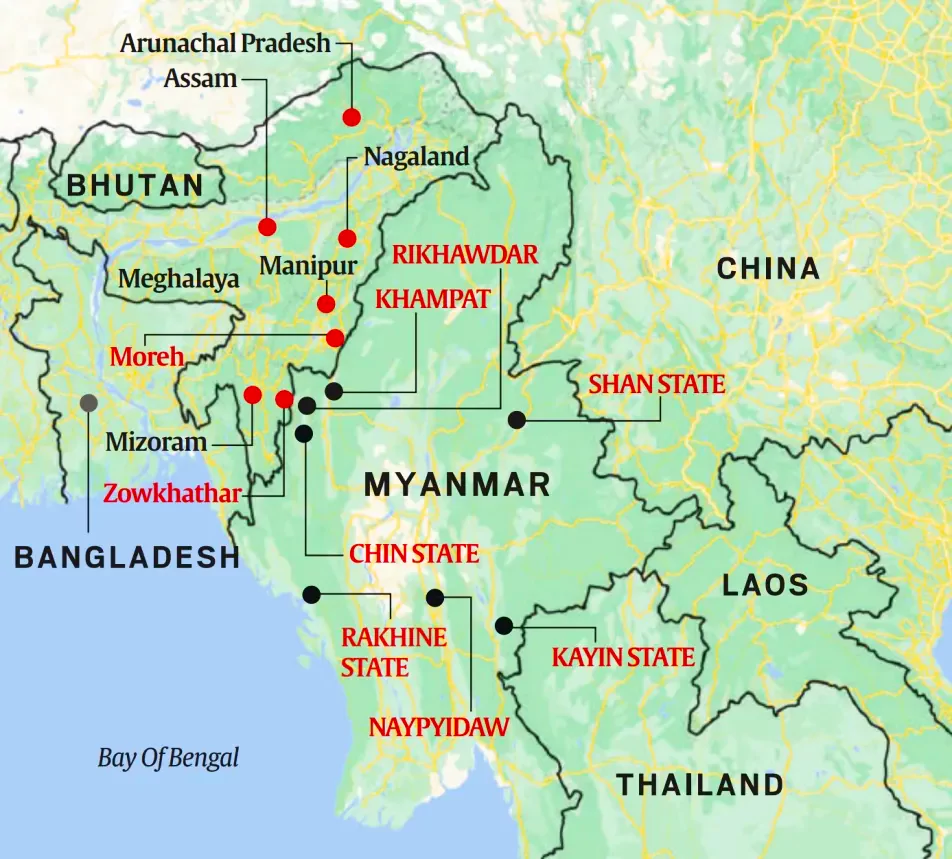
This editorial is based on the news “Misplaced priorities: On the scrapping of the Free Movement Regime between India and Myanmar” which was published in the Hindu. Recently, India has decided to scrap the Free Movement Regime (FMR) between India and Myanmar.
| Relevancy for Prelims: Myanmar Crisis, Instability In Myanmar, Smart Border Fencing, Free Movement Regime (FMR), and India’s Northeast Border Tension.
Relevancy for Mains: Removal of Free Movement Regime (FMR) between India and Myanmar. |
|---|

The decision to revoke the Free Movement Regime (FMR) holds immense significance for internal security and demographic integrity of the North Eastern States and to address illegal immigration. However, FMR holds an expression of the will of people of the region who share ethnic relations and the humongous exercise of fencing a border situated in rugged mountains and forests is a case of misplaced priorities and needs reconsideration.
| Prelims PYQ (2016):
Consider the following pairs: Community sometimes mentioned in the news In the affairs of 1. Kurd : Bangladesh 2. Madhesi : Nepal 3. Rohingya : Myanmar Which of the pairs given above is/are correctly matched? (a) 1 and 2 (b) 2 only (c) 2 and 3 (d) 3 only Ans: (c) |
|---|
| Must Read | |
| NCERT Notes For UPSC | UPSC Daily Current Affairs |
| UPSC Blogs | UPSC Daily Editorials |
| Daily Current Affairs Quiz | Daily Main Answer Writing |
| UPSC Mains Previous Year Papers | UPSC Test Series 2024 |
To get PDF version, Please click on "Print PDF" button.
How Clean Energy Needs, New Tech Shape Mineral Gov...
Stepping Stone: On Shubhanshu Shukla, NASA-Axiom-I...
How is Global Shipping trying to Decarbonise?
Contesting the Future of Forest Governance
A Tectonic Shift in Thinking to Build Seismic Resi...
Safe Havens No More: On Growing Crime Against Wome...
Monsoon Session of Parliament 2025: 21 Sittings, 8...
Language, Culture, and Identity in India
Indian Army Tests Akash Prime in Ladakh, Boosting ...
Banni Grasslands in Gujarat Ready to Host Cheetahs...
CWC Warns NGT: 34 Glacial Lakes in India Expanding...
Coronal Mass Ejections (CMEs) Trigger Rare Norther...

<div class="new-fform">
</div>